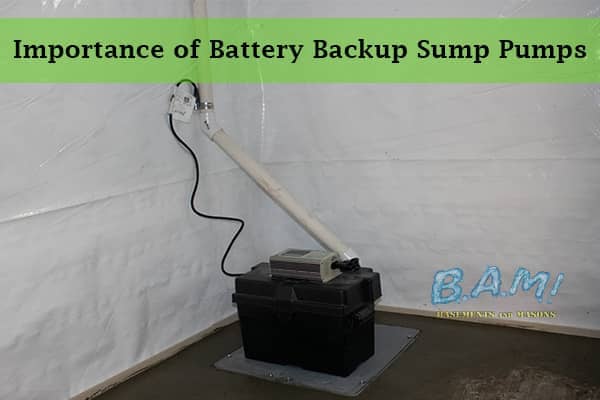The Best Guide To Best Basement Waterproofing
Wiki Article
An Unbiased View of Best Basement Waterproofing
Table of ContentsThe Basic Principles Of Best Basement Waterproofing Some Known Details About Best Basement Waterproofing A Biased View of Best Basement WaterproofingSee This Report about Best Basement WaterproofingThe 5-Minute Rule for Best Basement Waterproofing
What causes water damage concerns in your basement? Pipelines that line the inside of your walls are just one example of where water damage can occur.The soil and ground of your home is extremely important. If there is excessive water bordering your home, nonetheless, it can press the dirt right into your home and create the seals of your basement to become jeopardized. Best Basement Waterproofing. when you see excess water in places where it should not be, that is a really great sign that you have a problem
Concrete waterproofing finishes are cement-like; once dry, they adhere completely to concrete and masonry wall surfaces. You apply the finishing with a heavy brush made with bristles swirled throughout application for an attractive, finished look. Concrete water-proof finishes can not be applied to previously painted surfaces Silicate-based concrete sealants, likewise known as densifiers, are additionally ideal only for wall surfaces that have not been repainted or secured.
Due to the fact that these are permeating sealers, they can not exfoliate or peel, and you can have paint applied over them. The American Eagle group might find more challenging causes for your moisture issues; there are added services available. Plastic sheets and panels could be integrated with indoor cellar drain systems. They don't quit water from making it through the wall, but they do quit it from wrecking things in the basement.
Best Basement Waterproofing - Questions
A sump pump is needed to move water out of your cellar. In order to appropriately suggest a solution for your wet cellar, call American Eagle for a no-obligation go to. Our professionals will have the ability to describe which solutions are options for your home. Why should you waterproof your basement? Below are a couple of points the professionals can set up to help the waterproofing procedure: this is created for the walls of your cellar (Best Basement Waterproofing).

Basement waterproofing is a fantastic method to get ahead of possible water damages that might come your method.
How Best Basement Waterproofing can Save You Time, Stress, and Money.
When it comes to shielding your home, among one of the most important steps you can take is cellar waterproofing. A dry cellar not only guarantees a secure and healthy and balanced setting for you and your family, yet it additionally aids to stop expensive water damage and mold development. In this article, we will certainly go over the relevance of cellar waterproofing, the benefits it provides, and exactly how you can deal with protecting your area.By investing in cellar waterproofing now, you can aid to make certain that your home preserves its worth and attractiveness with time. One more advantage of cellar waterproofing is that it can aid to reduce your energy bills. A wet basement can contribute to greater levels of moisture in your house, which can make your heating and cooling system work tougher to keep a comfy temperature level.
When it go to my site pertains to cellar waterproofing, there are several techniques that can be utilized to keep water out of your room. These consist of interior sealants, outside waterproofing membrane layers, and drain systems. The very best method for your basement will depend upon aspects such as the degree of water breach, the condition of your foundation, and your budget.
Finally, cellar waterproofing is an important action in shielding your home from water damages, mold development, and other concerns. By buying basement waterproofing, you can ensure that your area stays dry, risk-free, and healthy and balanced for you and your household. Not just does cellar waterproofing offer comfort and security for your home, but it can also raise its worth and conserve you cash on energy prices in the future.
More About Best Basement Waterproofing
Inside sealants are a kind of basement waterproofing technique that includes using a sealant to the within the basement wall surfaces and floorings. Water can seep into a cellar via splits, spaces, or porous concrete, especially in locations where there is high groundwater or bad drain. This can cause water damage and mold growth, in addition to damages to the structure and architectural integrity of the structure.
Find Out More The sealer produces a barrier that protects against water from permeating with the concrete. However, this technique is only effective for minor water damages and does not address the underlying root causes of the moisture. The major resource of the requirement for exterior basement waterproofing is water seepage from the beyond the foundation walls.
It is an effective solution for preventing water damages and preserving the structural integrity of the structure. It can be expensive and turbulent to install, as it calls for excavation around the foundation and may include landscaping and other fixings once the waterproofing is complete. Nonetheless, this approach is the most trusted and resilient service for stopping water infiltration in the basement.
The Buzz on Best Basement Waterproofing
Report this wiki page